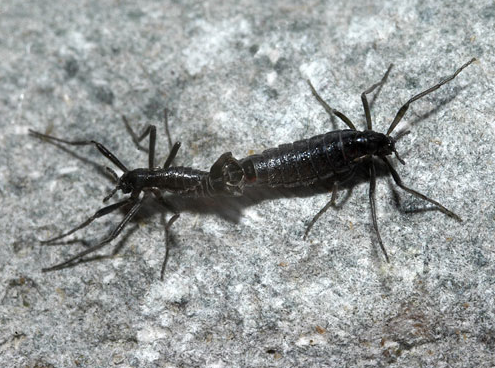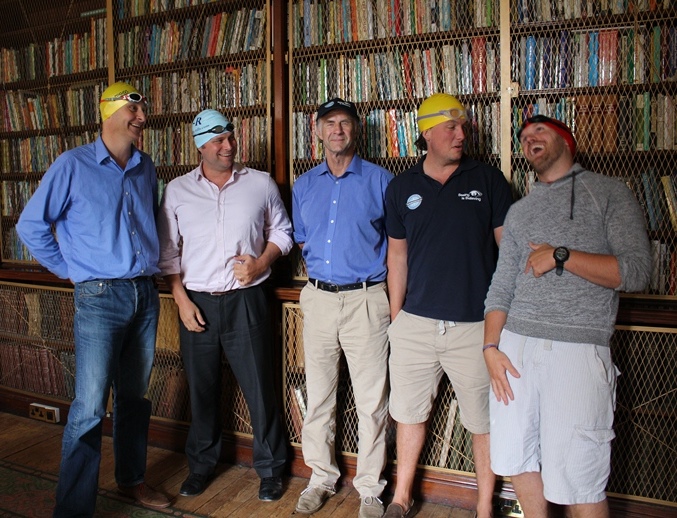Fact of the Day: What is aurora australis?

The aurora australis, commonly known as the southern lights, is a glow observed in the night sky created by the collision of energetic charged particles with atoms in the high altitude atmosphere. The charged particles originate in the magnetosphere and solar winds that pass by Earth are directed by the Earths magnetic field into the atmosphere. The amazing photo below was taken by the Team back…
Fact of the Day:
Ice shelves – (not to be confused with yesterdays fact about Ice sheet) An ice shelf is a thick floating platform of ice that forms when a glacier or ice sheet flows down to the coastline and onto the ocean surface. Other than in Antarctica ice shelves are only found in Greenland and Canada. The thickness of ice shelves can range anywhere from about 100 meters up to 1000 metres. Much of…
Fact of the Day:

The Antarctic ice sheet is the largest single mass of ice on Earth. It covers an area of almost 14 million km² and contains 30 million km³ of ice. Around 90 per cent of the fresh water on the Earth’s surface is held in the ice sheet, an amount equivalent to 70m of water in the world’s oceans. In East Antarctica the ice sheet rests on a major land mass, but in West Antarctica the bed is in…
Fact of the Day:

Samples known as ice cores are regularly drilled through the ice in Antarctica for various scientific research. They are removed as a long cylinder of ice that gives an indication of the past going back as far as 800,000 years. The properties of the ice, of dust trapped in the ice, and even of air bubbles trapped in the ice give valuable information about the earth’s climate at various times in…
Fact of the Day: What is a Belgica?

A Belgica is a species of flightless midge, native to Antarctica. Impressively, even though it is only between 2-6 millimeters long, it is the largest terrestrial animal on the continent, and of course its only insect. All other animals on Antarctica spend at least part of the time in…
Sir Ranulph Supports Cross-Channel Swimmers

As all of our supporters will know, one of the main aims of the Coldest Journey is to raise $10M for Seeing is Believing. The Challenge Yourself appeal has got people around the world putting themselves to the test with all manner of crazy ideas for raising money and well done to them. Yesterday, I met up with all four of the curiously named Channel Arm Bandits, who will be crossing the Englis…
Fact of the Day:

Solar Halo A Solar Halo is an optical atmospheric phenomenon frequently seen in Antarctica. It is caused as a result of the scattering of light by ice particles suspended in the air. Such phenomena are usually encountered in the winter rather than summer when lower temperatures make such occurrences more likely. This spectacular photograph was taken by our very own Ice Team member Ian…
Fact of the Day:

There is an ATM in Antarctica. In fact there are two machines (just in case one breaks down), making them the most southerly ATM’s in the world. They are located in McMurdo Station, a U.S. Antarctic research centre located on the southern tip of Ross Island and Antarctica’s largest community, capable of supporting up to 1,200 scientists and researchers. Although right now there are roughly…
Fact of the Day:
The first person born in Antarctica was the Argentine Emilio Marcos Palma on 7 January 1978. He was born in Fortín Sargento Cabral at the Esperanza Base near the tip of the Antarctic Peninsula. His father, Captain Jorge Emilio Palma, was head of the Argentine army detachment at the base. While ten people have been born on Antarctica since, Palma’s birthplace remains the most…
Fact of the Day:

Gateway to Antarctica. Above is a plaque found at the base of the Captain Scott statue in Christchurch, New Zealand. It reads: Christchurch is one of the main gateways to Antarctica. From the early 1900s, British expeditions used the Port of Lyttelton on their way to Antarctica. In 1955, Christchurch became the base for the United States Antarctic programme known as Operation D…
- Newer Posts
- Page 5 of 15
- Older Posts
